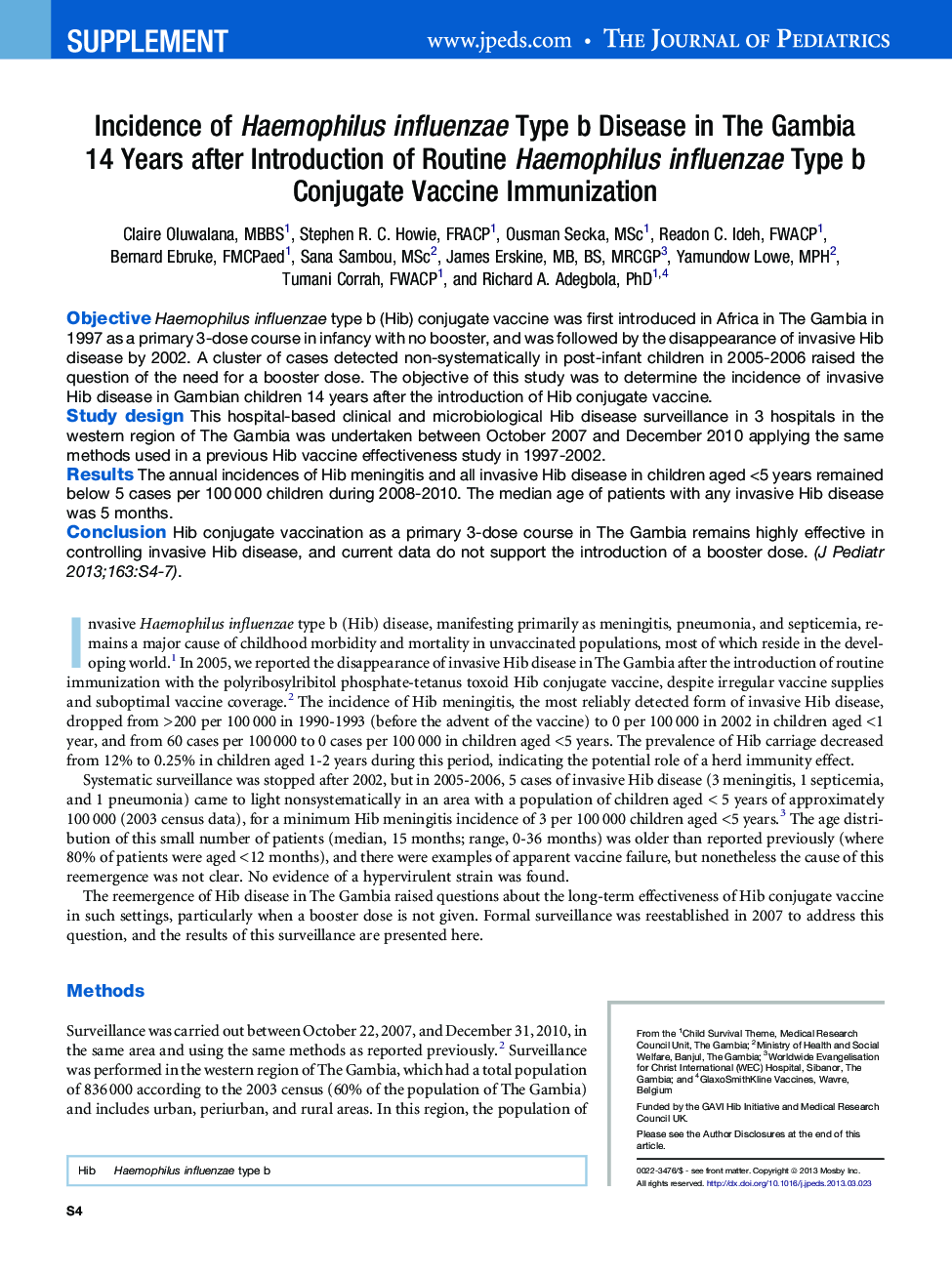| Article ID | Journal | Published Year | Pages | File Type |
|---|---|---|---|---|
| 4165365 | The Journal of Pediatrics | 2013 | 4 Pages |
ObjectiveHaemophilus influenzae type b (Hib) conjugate vaccine was first introduced in Africa in The Gambia in 1997 as a primary 3-dose course in infancy with no booster, and was followed by the disappearance of invasive Hib disease by 2002. A cluster of cases detected non-systematically in post-infant children in 2005-2006 raised the question of the need for a booster dose. The objective of this study was to determine the incidence of invasive Hib disease in Gambian children 14 years after the introduction of Hib conjugate vaccine.Study designThis hospital-based clinical and microbiological Hib disease surveillance in 3 hospitals in the western region of The Gambia was undertaken between October 2007 and December 2010 applying the same methods used in a previous Hib vaccine effectiveness study in 1997-2002.ResultsThe annual incidences of Hib meningitis and all invasive Hib disease in children aged <5 years remained below 5 cases per 100 000 children during 2008-2010. The median age of patients with any invasive Hib disease was 5 months.ConclusionHib conjugate vaccination as a primary 3-dose course in The Gambia remains highly effective in controlling invasive Hib disease, and current data do not support the introduction of a booster dose.
